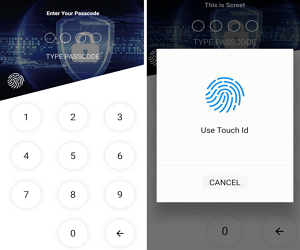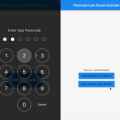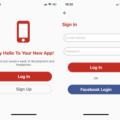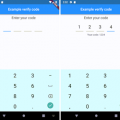
Flutter Pass Code Page or Pin Code Page Package
This package gives Flutter Lock Screen Code with beautiful pass code page for using both android and ios.
Demo


Finger Print Usage
First, be sure you should ensure that you add the local_auth package as a dependency. And Please read local_auth all integration details.
https://pub.dartlang.org/packages/local_auth
iOS Integration
Note that this plugin works with both TouchID and FaceID. However, to use the latter, you need to also add:
<key>NSFaceIDUsageDescription</key>
<string>Why is my app authenticating using face id?</string>to your Info.plist file. Failure to do so results in a dialog that tells the user your app has not been updated to use TouchID.
Android Integration
Note that local_auth plugin requires the use of a FragmentActivity as opposed to Activity. This can be easily done by switching to use FlutterFragmentActivity as opposed to FlutterActivity in your manifest (or your own Activity class if you are extending the base class).
Update your project’s AndroidManifest.xml file to include the USE_FINGERPRINT permissions:
<manifest xmlns:android="http://schemas.android.com/apk/res/android"
package="com.example.app">
<uses-permission android:name="android.permission.USE_FINGERPRINT"/>
<manifest>Usage
It is really easy to use!
You should ensure that you add the flutter_lock_screen as a dependency in your flutter project.
dependencies:
flutter_lock_screen: '^1.0.6'Than you can use it with below example.
import 'package:flutter/material.dart';
import 'package:local_auth/local_auth.dart';
import 'package:testapp/empty_page.dart';
import 'package:flutter/services.dart';
class PassCodeScreen extends StatefulWidget {
PassCodeScreen({Key key, this.title}) : super(key: key);
final String title;
@override
_PassCodeScreenState createState() => new _PassCodeScreenState();
}
class _PassCodeScreenState extends State<PassCodeScreen> {
bool isFingerprint = false;
Future<Null> biometrics() async {
final LocalAuthentication auth = new LocalAuthentication();
bool authenticated = false;
try {
authenticated = await auth.authenticateWithBiometrics(
localizedReason: 'Scan your fingerprint to authenticate',
useErrorDialogs: true,
stickyAuth: false);
} on PlatformException catch (e) {
print(e);
}
if (!mounted) return;
if (authenticated) {
setState(() {
isFingerprint = true;
});
}
}
@override
Widget build(BuildContext context) {
var myPass = [1, 2, 3, 4];
return LockScreen(
title: "This is Screet ",
passLength: myPass.length,
bgImage: "images/pass_code_bg.jpg",
fingerPrintImage: "images/fingerprint.png",
showFingerPass: true,
fingerFunction: biometrics,
fingerVerify: isFingerprint,
borderColor: Colors.white,
showWrongPassDialog: true,
wrongPassContent: "Wrong pass please try again.",
wrongPassTitle: "Opps!",
wrongPassCancelButtonText: "Cancel",
passCodeVerify: (passcode) async {
for (int i = 0; i < myPass.length; i++) {
if (passcode[i] != myPass[i]) {
return false;
}
}
return true;
},
onSuccess: () {
Navigator.of(context).pushReplacement(
new MaterialPageRoute(builder: (BuildContext context) {
return EmptyPage();
}));
});
}
}
Contributing
Pull requests are welcome. For major changes, please open an issue first to discuss what you would like to change.
Please make sure to update tests as appropriate.
Source Code
Please Visit Flutter Lock Screen Code Source Code at GitHub







